 W
WAndalusi Arabic, also known as Andalusian Arabic, was a variety or varieties of Arabic spoken in Al-Andalus, the regions of the Iberian Peninsula under Muslim rule from the 9th century to the 17th century. It became an extinct language in Iberia after the expulsion of the former Hispanic Muslims, which took place over a century after the Granada War by the Catholic Monarchs of Spain. Once widely spoken in Iberia, the expulsions and persecutions of Arabic speakers caused an abrupt end to the language's use on the peninsula. Its use continued to some degree in North Africa after the expulsion, although Andalusi speakers were rapidly assimilated by the Maghrebi communities to which they fled.
 W
WClassical Arabic or Quranic Arabic is the standardized literary form of the Arabic language used from the 7th century and throughout the Middle Ages, most notably in Umayyad and Abbasid literary texts such as poetry, elevated prose and oratory, and is also the liturgical language of Islam.
 W
WClassical Armenian is the oldest attested form of the Armenian language. It was first written down at the beginning of the 5th century, and all Armenian literature from then through the 18th century is in Classical Armenian. Many ancient manuscripts originally written in Ancient Greek, Persian, Hebrew, Syriac and Latin survive only in Armenian translation.
 W
WOld Burmese was an early form of the Burmese language, as attested in the stone inscriptions of Pagan, and is the oldest phase of Burmese linguistic history. The transition to Middle Burmese occurred in the 16th century. The transition to Middle Burmese included phonological changes as well as accompanying changes in the underlying orthography. Word order, grammatical structure and vocabulary have remained markedly comparable, well into Modern Burmese, with the exception of lexical content.
 W
WCoptic is a family of closely-related dialects descended from the Ancient Egyptian language and historically spoken by the Copts of Egypt. Coptic was supplanted by Egyptian Arabic as the primary spoken language of Egypt following the Muslim conquest of Egypt, although it remains in use today as the liturgical language of the Coptic Church. Innovations in grammar, phonology, and the influx of Greek loanwords distinguish Coptic from earlier periods of the Egyptian language. It is written with the Coptic alphabet, a modified form of the Greek alphabet with several additional letters borrowed from the Demotic Egyptian script.
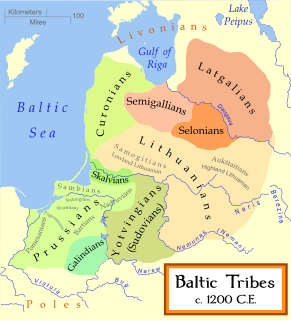 W
WThe Curonian language, or Old Curonian, is a nearly unattested Baltic extinct language spoken by the Curonians, a Baltic tribe who inhabited the Courland Peninsula and the nearby Baltic shore. Curonian was a Baltic language; some scholars consider it to have been an Eastern Baltic, intermediate between Lithuanian and Latvian, while others like Vytautas Mažiulis classify it as Western Baltic. Linguist Eduard Vääri argues that it is possible that Curonians were Baltic Finns. The attested local Finnic language, Livonian, may be the source of Finnic elements in Curonian. In 1912 Latvian linguist Jānis Endzelīns finally proved that Curonian was a Baltic language; according to him, Curonian by its qualities was in between Lithuanian and Latvian languages.
 W
WIn linguistics, Old Dutch or Old Low Franconian is the set of Franconian dialects spoken in the Low Countries during the Early Middle Ages, from around the 5th to the 12th century. Old Dutch is mostly recorded on fragmentary relics, and words have been reconstructed from Middle Dutch and Old Dutch loanwords in French.
 W
WMiddle English was a form of the English language spoken after the Norman conquest (1066) until the late 15th century. The English language underwent distinct variations and developments following the Old English period. Scholarly opinion varies, but the Oxford English Dictionary specifies the period when Middle English was spoken as being from 1150 to 1500. This stage of the development of the English language roughly followed the High to the Late Middle Ages.
 W
WThe Forth and Bargy dialect, also known as Yola, is an extinct Anglic language once spoken in the baronies of Forth and Bargy in County Wexford, Ireland. It is thought to have evolved from Middle English, which was brought to Ireland during the Norman invasion, beginning in 1169. As such, it was similar to the Fingallian dialect of the Fingal area. Both became extinct in the 19th century, when they were replaced by modern Hiberno-English. The name "Yola" means "old" in the dialect.
 W
WGalician-Portuguese, also known as Old Portuguese or as Medieval Galician when referring to the history of each modern language, was a West Iberian Romance language spoken in the Middle Ages, in the northwest area of the Iberian Peninsula. Alternatively, it can be considered a historical period of the Galician and Portuguese languages.
 W
WGalindian is the poorly attested extinct Baltic language of the Galindians, thought to have been very similar to Old Prussian. There are no extant writings in Galindian.
 W
WGothic is an extinct East Germanic language that was spoken by the Goths. It is known primarily from the Codex Argenteus, a 6th-century copy of a 4th-century Bible translation, and is the only East Germanic language with a sizeable text corpus. All others, including Burgundian and Vandalic, are known, if at all, only from proper names that survived in historical accounts, and from loanwords in other languages such as Portuguese, Spanish, and French.
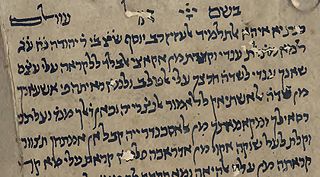 W
WMedieval Hebrew was a literary and liturgical language that existed between the 4th and 19th century. It was not commonly used as a spoken language, but mainly in written form by rabbis, scholars and poets. Medieval Hebrew had many features that distinguished it from older forms of Hebrew. These affected grammar, syntax, sentence structure, and also included a wide variety of new lexical items, which were either based on older forms or borrowed from other languages, especially Aramaic, Greek and Latin.
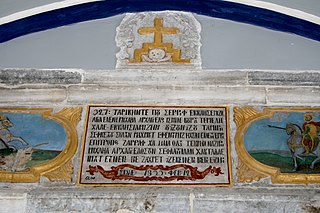 W
WKaramanlı Turkish is both a form of written Turkish and a dialect of Turkish spoken by the Karamanlides, a community of Turkish-speaking Orthodox Christians in Ottoman Turkey. The official Ottoman Turkish was written in the Arabic script, but the Karamanlides used the Greek alphabet to write their form of Turkish. Karamanlı Turkish had its own literary tradition and produced numerous published works in print during the 19th century, some of them published by Evangelinos Misailidis by the Anatoli or Misailidis publishing house.
 W
WThe langues d'oïl are a dialect continuum that includes standard French and its closest autochthonous relatives historically spoken in the northern half of France, southern Belgium, and the Channel Islands. These belong to the larger category of Gallo-Romance languages, which also include the historical languages of east-central France and western Switzerland, southern France, portions of northern Italy, and the Val d'Aran in Spain.
 W
WMedieval Latin was the form of Latin used in Roman Catholic Western Europe during the Middle Ages. In this region it served as the primary written language, though local languages were also written to varying degrees. Latin functioned as the main medium of scholarly exchange, as the liturgical language of the Church, and as the working language of science, literature, law, and administration.
 W
WRenaissance Latin is a name given to the distinctive form of Latin style developed during the European Renaissance of the fourteenth to fifteenth centuries, particularly by the Renaissance humanism movement.
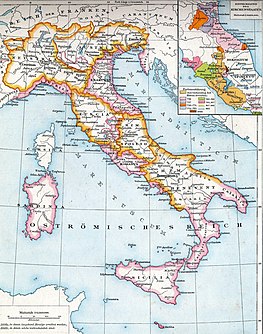 W
WLombardic or Langobardic is an extinct West Germanic language that was spoken by the Lombards (Langobardi), the Germanic people who settled in Italy in the sixth century. It was already declining by the seventh century because the invaders quickly adopted the Latin vernacular spoken by the local population. Lombardic may have been in use in scattered areas until as late as c. 1000 AD. A number of place names in the Lombardy Region in Northern Italy and items of Lombard vocabulary derive from Lombardic.
 W
WMiddle Low German or Middle Saxon is a developmental stage of Low German. It developed from the Old Saxon language in the Middle Ages and has been documented in writing since about 1225/34 (Sachsenspiegel). During the Hanseatic period, Middle Low German was the leading written language in the north of Central Europe and served as a lingua franca in the northern half of Europe. It was used parallel to medieval Latin also for purposes of diplomacy and for deeds.
 W
WMerya or Meryanic is an extinct Finno-Ugric language, which was spoken by the Meryans. Merya began to be assimilated by East Slavs when their territory became incorporated into Kievan Rus' in the 10th century. However some Merya speakers might have even lived in the 18th century. There is also a theory that the word for "Moscow" originates from the Merya language. The Meryan language stretched to the western parts of Vologda oblast and Moscow
 W
WMeshchera is an extinct Uralic language, it was either a Mordovin or a Permic language. Pauli Rahkonen has suggested on the basis of toponymic evidence that it was a Permic or closely related language. Rahkonen's speculation has been criticized by Vladimir Napolskikh. Meshchera was spoken around the left black of the Middle Oka. Some Meshchera speaking people possibly assimilated into Mishar Tatars. However this theory is disputed.
 W
WMeshchera is an extinct Uralic language, it was either a Mordovin or a Permic language. Pauli Rahkonen has suggested on the basis of toponymic evidence that it was a Permic or closely related language. Rahkonen's speculation has been criticized by Vladimir Napolskikh. Meshchera was spoken around the left black of the Middle Oka. Some Meshchera speaking people possibly assimilated into Mishar Tatars. However this theory is disputed.
 W
WMozarabic, also called Andalusi Romance, was a continuum of related Romance dialects spoken in the Muslim-controlled areas of the Iberian Peninsula, known as Al-Andalus. Mozarabic descends from Late Latin and early Romance dialects spoken in Hispania up to the 8th century and was spoken until around the 13th century when it either was replaced or merged with the northern peninsular Romance varieties, mostly Spanish (Castilian), Catalan and Portuguese.
 W
WThe Volga Finns are a historical group of indigenous peoples of Russia living in the vicinity of the Volga, who speak Uralic languages. Their modern representatives are the Mari people, the Erzya and the Moksha Mordvins, as well as extinct Merya, Muromian and Meshchera languages. The Permians are sometimes also grouped as Volga Finns.
 W
WNavarro-Aragonese is a Romance language once spoken in a large part of the Ebro River basin, south of the middle Pyrenees, although it is only currently spoken in a small portion of its original territory. The areas where it was spoken might have included most of Aragón, southern Navarre, and La Rioja. It was also spoken across several towns of central Navarre in a multilingual environment with Occitan, where Basque was the native language.
 W
WNorn is an extinct North Germanic language that was spoken in the Northern Isles off the north coast of mainland Scotland and in Caithness in the far north of the Scottish mainland. After Orkney and Shetland were pledged to Scotland by Norway in 1468–69, it was gradually replaced by Scots. Norn is thought to have become extinct in 1850, after the death of Walter Sutherland, the language's last known speaker, though there are claims the language persisted as late as the 20th century.
 W
WOld Norse, Old Nordic, or Old Scandinavian is the conventional name to describe a stage of development of North Germanic dialects before their final divergence into separate Nordic languages. Old Norse was spoken by inhabitants of Scandinavia and their overseas settlements and chronologically coincides with the Viking Age, the Christianization of Scandinavia and the consolidation of Scandinavian kingdoms from around the 7th to the 15th centuries.
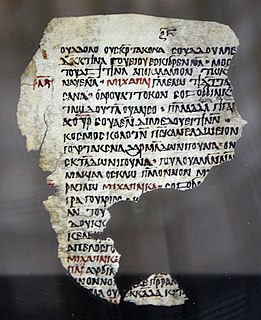 W
WOld Nubian is an extinct Nubian language, attested in writing from the 8th to the 15th century AD. It is ancestral to modern-day Nobiin and closely related to Dongolawi and Kenzi. It was used throughout the kingdom of Makuria, including the eparchy of Nobatia. The language is preserved in more than a hundred pages of documents and inscriptions, both of a religious, and related to the state and private life, written using an adaptation of the Coptic alphabet.
 W
WOld Prussian was a Western Baltic language belonging to the Balto-Slavic branch of the Indo-European languages, once spoken by the Old Prussians, the Baltic peoples of the Prussian region. The language is called Old Prussian to avoid confusion with the German dialects of Low Prussian and High Prussian and with the adjective Prussian as it relates to the later German state. Old Prussian began to be written down in the Latin alphabet in about the 13th century, and a small amount of literature in the language survives.
 W
WOld Saxon, also known as Old Low German, was a Germanic language and the earliest recorded form of Low German/Northern Low Saxon. It is a West Germanic language, closely related to the Anglo-Frisian languages. It is documented from the 8th century until the 12th century, when it gradually evolved into Middle Low German. It was spoken throughout modern northwestern Germany, primarily in the coastal regions and in the eastern Netherlands by Saxons, a Germanic tribe that inhabited the region of Saxony. It partially shares Anglo-Frisian's Ingvaeonic nasal spirant law which sets it apart from Low Franconian and Irminonic languages, such as Dutch, Luxembourgish and German.
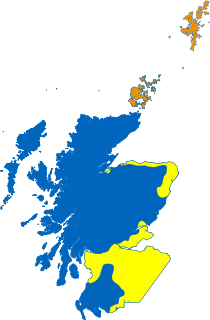 W
WEarly Scots was the emerging literary language of the Northern Middle English speaking parts of Scotland in the period before 1450. The northern forms of Middle English descended from Northumbrian Old English. During this period, speakers referred to the language as "English".
 W
WSelonian was a Baltic language spoken by the Eastern Baltic tribe of the Selonians, who until the 15th century lived in Selonia, a territory in southeastern Latvia and northeastern Lithuania.
 W
WSemigallian, or Zemgalian, is an extinct language of the Baltic language sub-family of the Indo-European languages.
 W
WOld Church Slavonic or Old Slavonic was the first Slavic literary language.
 W
WTangut is an extinct language in the Sino-Tibetan language family.
 W
WTiberian Hebrew is the canonical pronunciation of the Hebrew Bible or Tanakh committed to writing by Masoretic scholars living in the Jewish community of Tiberias in ancient Galilee c. 750–950 CE under the Abbasid Caliphate. They wrote in the form of Tiberian vocalization, which employed diacritics added to the Hebrew letters: vowel signs and consonant diacritics (nequdot) and the so-called accents. These together with the marginal notes masora magna and masora parva make up the Tiberian apparatus.
 W
WThe Tocharian languages, also known as Arśi-Kuči, Agnean-Kuchean or Kuchean-Agnean, are an extinct branch of the Indo-European language family spoken by inhabitants of the Tarim Basin, the Tocharians. They are known from manuscripts dating from the 5th to the 8th century AD, which were found in oasis cities on the northern edge of the Tarim Basin and the Lop Desert. The discovery of this language family in the early 20th century contradicted the formerly prevalent idea of an east–west division of the Indo-European language family on the centum–satem isogloss, and prompted reinvigorated study of the family. Mistakenly identifying the authors with the Tokharoi people of ancient Bactria (Tokharistan), early authors called these languages "Tocharian". This naming has remained, although the names Agnean and Kuchean have been proposed as a replacement.